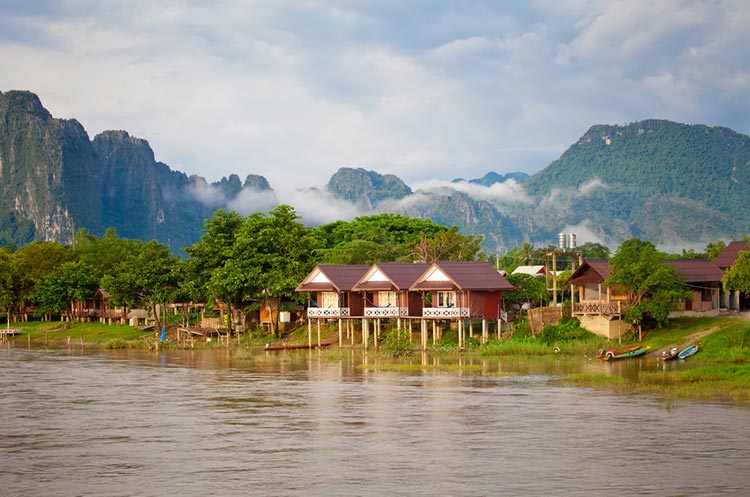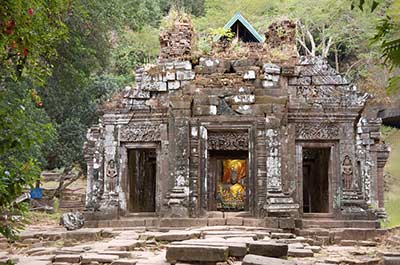
Laos
Natural beauty and historical sites
Laos is a landlocked country bordered by Thailand, Burma, China, Vietnam and Cambodia. The Mekong river defines the Laotian border with Burma and Thailand for hundreds of kilometers.
Capital and largest city is Vientiane, while the UNESCO World Heritage Site town of Luang Prabang is a very picturesque small town surrounded by mountains.
Laos is a Buddhist country, with much of its area mountainous. The majority of its people are small scale farmers. The country is an increasingly popular tourist destination with the towns of Luang Prabang and Vientiane being the main attractions.
History of Laos
From the 10th century parts of Laos were under control of the neighboring Khmer empire. The ruins of a number of Khmer temples like the Wat Phou not far from the Cambodian border still remain today.
Lan Xang Kingdom
In the 14th century, the Lan Xang (million elephants) Kingdom was founded by Prince Fa Ngum. At the height of its power the Kingdom expanded into present day Vietnam.
King Setthathirath who ruled from 1548 until 1571 defended the Kingdom successfully against invasions from Burma and the Ayutthaya Kingdom. He build some of the country’s best known monuments, like the Wat Xieng Thong temple and the Pha That Luang. The Lan Xang Kingdom existed until 1707, after which it split up in three Kingdoms, Luang Prabang, Champasak and Vientiane.
During the second half of the 18th century parts of the Kingdom were conquered by the Burmese and by Siam (present day Thailand). It was reunited by the French in 1893 when they colonized the country. Laos regained its independence in 1953.
To do & see in Laos
Laos is a beautiful country with many natural attractions as well as historical sites.
Wat Phou
The Wat Phou in the South of Laos is one of the temples build by the Khmer empire that controlled much of Laos at that time. The temple dating back to the 10th century consists of several structures including two Palaces, a library and a sanctuary dedicated to the Hindu God Shiva. The Wat Phou is a UNESCO World Heritage Site.
The Plain of Jars
Some of the oldest traces of civilization in Laos are the Plain of Jars in Northeast Laos. Thousands of large stone jars are spread out over several sites. Their purpose is not known with certainty, although they were probably used in burial rituals. The jars were made during the Iron age, the earliest ones being more than 2,000 years old.
Buddhist temples
Being a Buddhist country, Laos is dotted with temples that still serve as the center of the community, especially in rural areas. The most highly revered site for Laos Buddhists is the Pha That Luang, a gold covered stupa in Vientiane. Other important temples in Vientiane are the Wat Si Saket and the Haw Phra Kaew. The Wat Xieng Thong and the Haw Phra Bang are among the most attractive temples of Luang Prabang.
Luang Prabang
The town of Luang Prabang was made a UNESCO World Heritage Site in 1995. The very picturesque town that is surrounded by limestone mountains and party enclosed by rivers is a mix of traditional Laos architecture and French colonial buildings. The atmosphere of the small town is one of tranquility.
Vang Vieng
The area of Vang Vieng a few hours from Vientiane is known for its beautiful scenery of limestone mountains and the Nam Song river. Vang Vieng is mostly a backpacker destination with tubing and kayaking on the river being the main attractions.



